I had intended on writing some more blogs about apple tree grafting this year but I’ll admit that between family, work, apple tree grafting, and maple syrup production I haven’t had as much free time to blog. I spent a good deal of time looking forward to spring this year and all of the stuff we would have going on at the farm. I thought that starting March 1st we’d be busy with maple syrup assuming we’d have a year like last year where the sap would start running in early March and end at the end of March. Turned out mother nature had other plans for us and the sap didn’t really turn on until mid March. That coupled with the fact that my rootstocks and scion showed up later this year it meant that I had a lot of stuff to do at the same time. While maple syrup has taken most of our farm time, and work has taken most of my home time, I was trying to graft at least 20-30 trees a day at night.
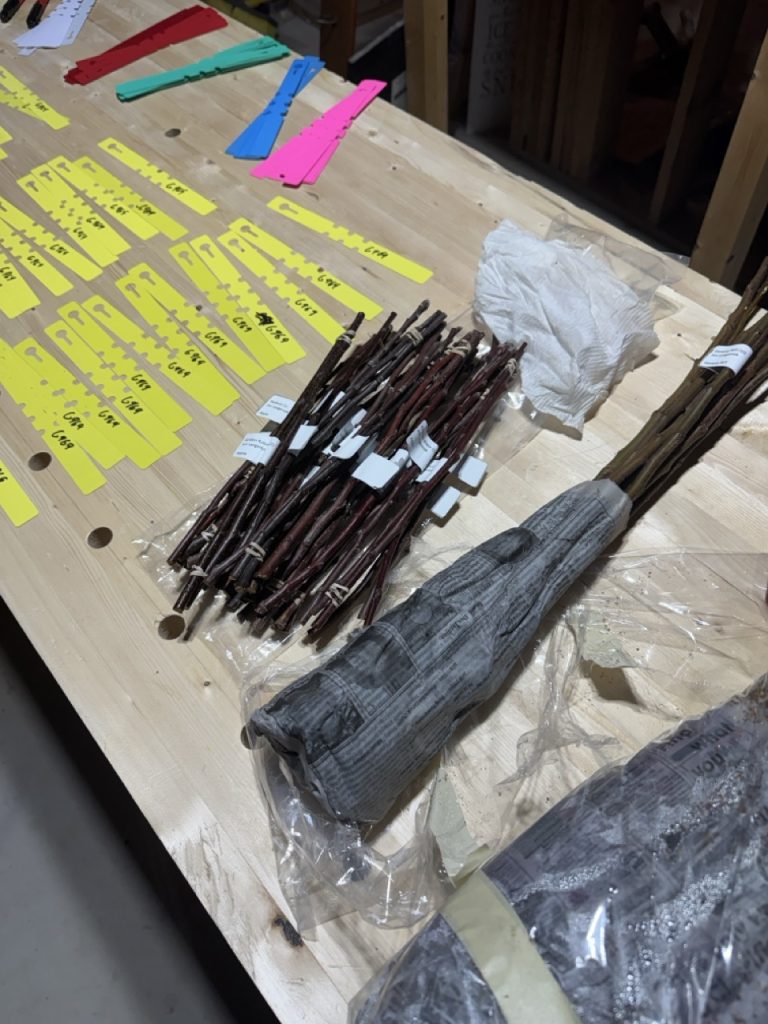
I moved the grafting operation from the kitchen to the basement this year so I’d have more space (I think Laura appreciated that). I had no real rhyme or reason to what scions I grafted onto what rootstock. My intention has been, and still is, to experiment with the different rootstock and see what works best in our soil. I think it will take a few years to narrow down which one(s) do best in the soil so for now I’m comfortable spreading them out across a few varieties. I had been attempting to color code the trees by the type of rootstock they were on but that plan fell by the way side when I realized I didn’t have enough of the same color tag to keep that model. Beyond the “not enough of this color tag” mix up grafting went pretty well this year though…
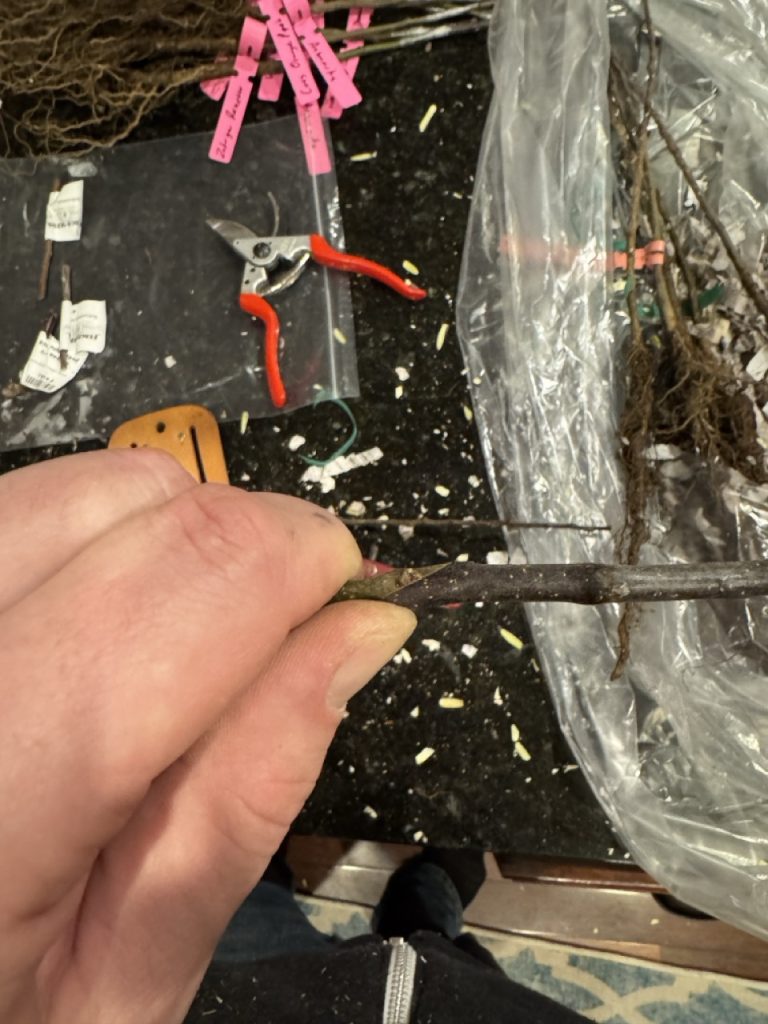
Admittedly it took me a few grafts to get back into the groove but once I got going I found I could graft about a tree a minute. This of course does not include the time it takes to label the trees (which really slowed me down) or the application of the grafting compound (which I prefer to do once they are heeled over in buckets). My process though is largely the same as last year though….
- Pick a scion stick and see how many grafts I can get out of it. Some scions I could get 4 – some 6 it all depended on bud spacing and the length of the scion stick.
- Cut the scion stick into individual scions
- Determine which rootstock I was going to use and write out the labels for each one
- Graft them one at a time being careful to keep the rootstock and label together
- Heel them over in a bucket with dirt to keep the roots wet
One of the challenges I had this year though was that I had quite a few scions that were very small diameter. I did the best that I could to align a rootstock diameter to the scion diameter but for a lot of the trees that just wasn’t possible. I know a lot of folks handle things differently in these cases but my solution was to just try and line the cambium on one side of the graft together fully…
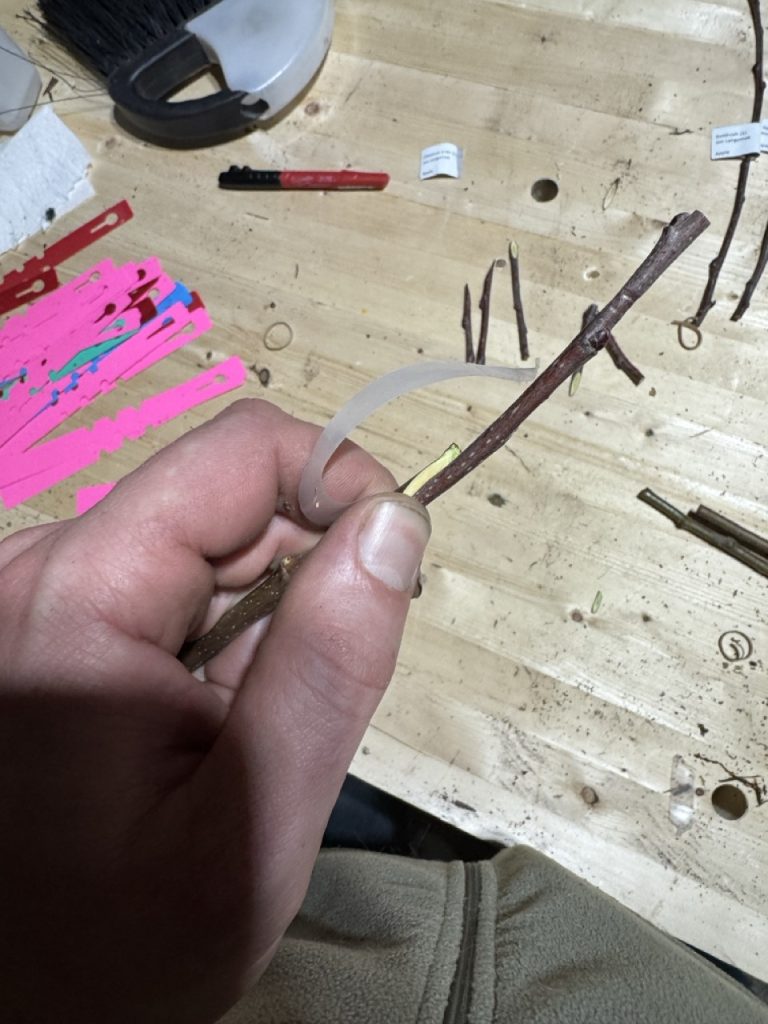
Then I just wrapped the graft as I normally would being sure that I kept the pressure on the side with the cambium connection. Time will tell if this strategy worked but I wasn’t sure what else to do…
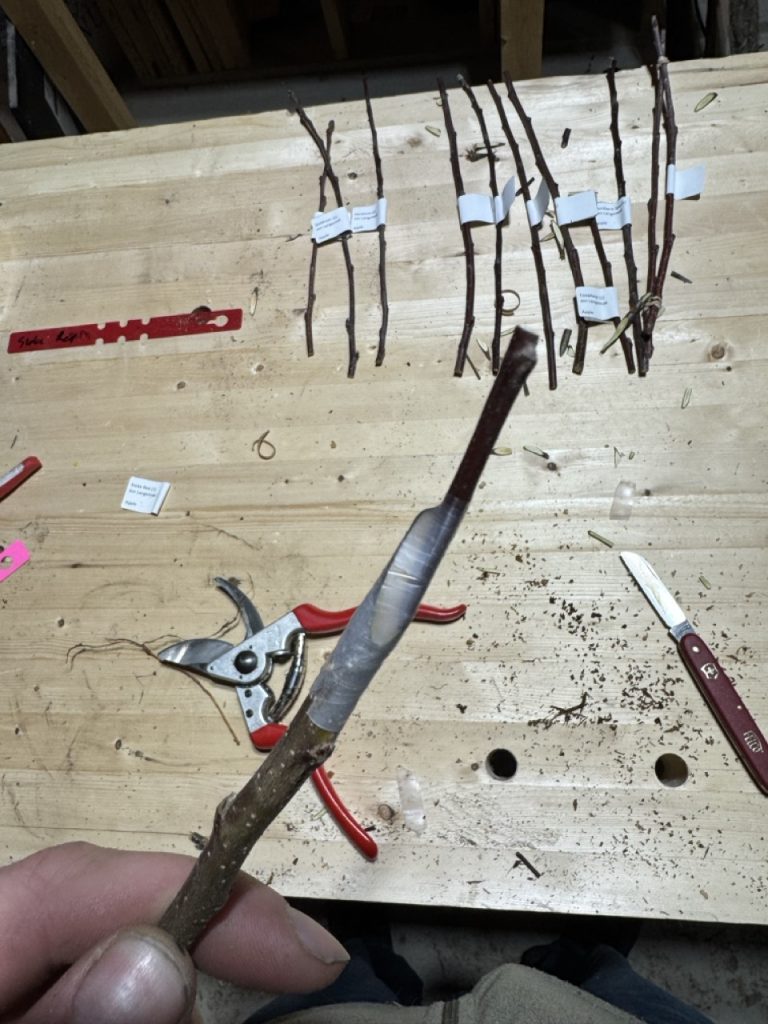
At the end I had about 170 trees grafted spread between a few containers. I actually ran out of containers and had to go buy some. I ended up buying those rectangular trays that are meant to sit on a deck railing. I liked how they had slots on each side for the dirt and the trees sat in them rather neatly…
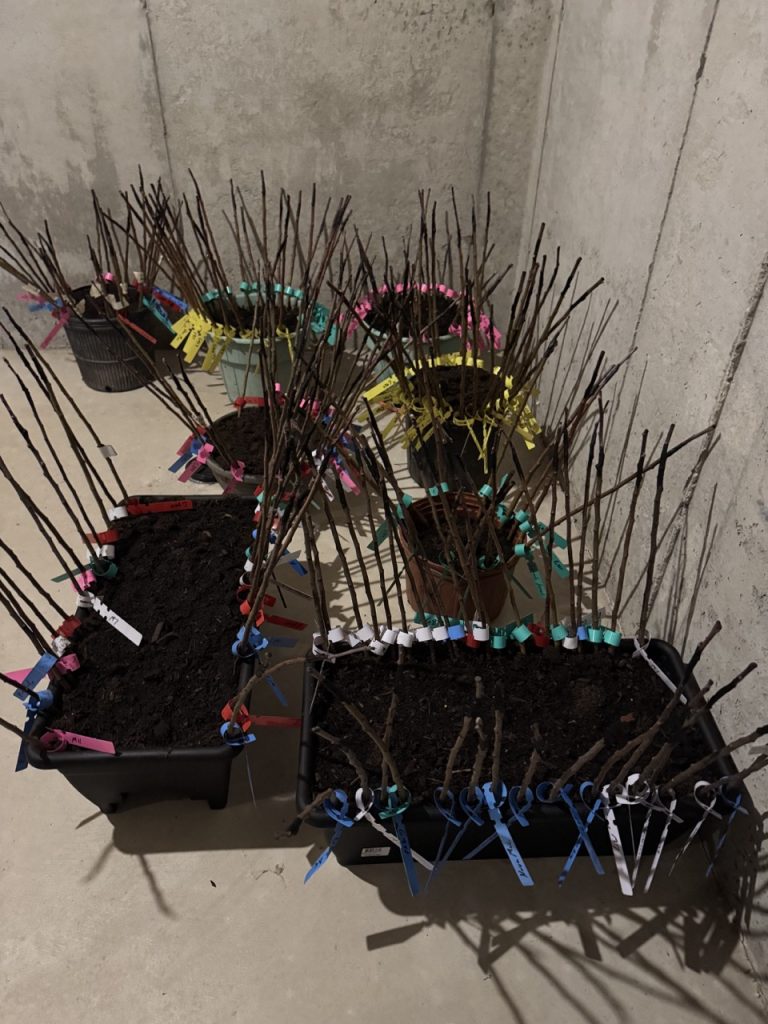
Once potted I give them a good watering and then just keep them in a dark corner of the basement until things start warming up. As I see rootstock growth I will pick off any buds that are growing so the roots can focus on the scions. Hoping to start seeing some growth in the buds here towards the middle of April. Looking back at my pictures from last year I see that I had some buds breaking and opening as early as April 9th 2024. I guess that makes sense as I had grafted in early March last year. Lesson learned on my end that despite how much planning you do every year will likely be different.
Anyways – that’s all for now. Back to maple syrup production!

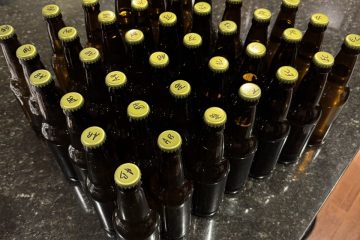
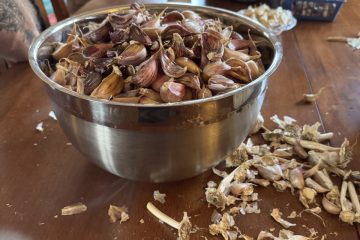
0 Comments